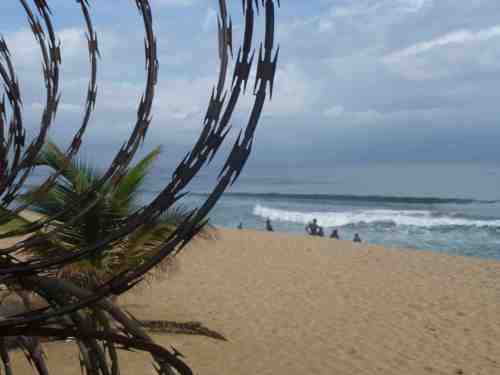One of the first things you might notice about Monrovia is the barbed wire. It grows like vines from the top of the salt-scarred concrete battlements that ring anything of official value or importance, showing up everywhere in an endless catalogue of styles. Shards of broken glass reach toward the sky atop towering grey walls, jagged rows of green and yellow that lead to rusted iron gates topped by metal spikes that look like prehistoric sharks teeth. It flows in inexhaustible loops around the imposing United Nations compound, a blue and cream tower built by Muammar Gaddafi in a distant era, razor blades budding from dense spirals. It encircles pastel-colored government ministry buildings and snakes around post offices and banks, pieces of cattle wire strung between steel poles at a gas station like a lazy afterthought. It even looms atop the twenty-foot high walls that ring the city’s central cemetery; an oddity that makes sense only when you learn that for a time after the war the cemetery was a congregation point for ex-soldiers and refugees who squatted among its tombs and tall grasses. Monrovia in 2011 does not feel like a war zone but neither does war feel very far away. It hovers in the background, hinted at in the stone faces of blue-helmeted Indian soldiers – all female – who clutch automatic rifles outside the Ministry of Foreign Affairs and the unnaturally large number of amputees who crutch and wheel their way around the city’s hot streets. After a series of meetings with exquisitely cynical United Nations officials and a few casual conversations with hard-eyed, unexpectedly open Liberians, I start wondering whether the country really coughed the war out of its system or if it’s simply temporarily exhaling.
Read the rest of this post on Lost in Plantation, and further writing from Ashoka in Monrovia.
